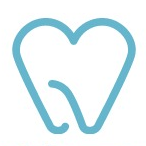The hazards of dental calculus are so great!
Dental calculus is a plaque and deposit that accumulates on the surface of teeth or restorations, gradually formed by mineral salts in saliva or gingival crevicular fluid. Once formed, it cannot be removed by brushing. Dental calculus and plaque adhering to the surface of calculus are the main culprits of periodontal disease.
Classification of dental calculus
Based on the location of calculus deposits with the gingival margin as the boundary, it can be divided into supragingival calculus and subgingival calculus.
• Supragingival calculus, also known as supragingival calculus, deposits on the clinical crown, above the gingival margin, can be seen directly with the naked eye, and is yellow or white in color.
• Subgingival calculus, also known as subgingival calculus, deposits below the gingival margin, cannot be seen with the naked eye, and can only be detected using a probe. It is brown or black in color.
Harm of dental calculus
Dental calculus is an important pathogenic factor for gingival bleeding, deepening of periodontal pockets, alveolar bone resorption, and the development of periodontal disease.
The main hazards of dental calculus to oral health:
- Dental calculus itself is hard and rough, causing mechanical irritation to the gums.
- Dental calculus surface easily accumulates plaque, causing gingival inflammation.
- The porous structure of dental calculus easily adsorbs a large amount of bacterial toxins.
- Dental calculus makes it difficult to clean the dental plaque in the gingival crevice, forming a vicious cycle.
Prevention and Removal of Dental Calculus
Brushing teeth is one way to prevent the formation of dental calculus, but brushing can only remove some plaque. In addition to brushing, the use of tools such as dental floss and interdental brushes is also necessary to assist in cleaning and prevent the formation of dental calculus.
Once dental calculus forms, it needs to be removed through dental cleaning. The pigments attached to the teeth also need to be removed through dental cleaning to restore the beauty and health of the teeth.
Regular dental cleaning and daily oral care are key to preventing dental calculus and oral diseases.
Dental Cleaning Process and Follow-up Treatment
Before dental cleaning, the oral condition needs to be examined. Some patients may need to treat dental caries and periodontal diseases first. The dental cleaning process includes removing supra-gingival dental calculus, plaque, and pigments, and polishing the tooth surface to delay re-deposition. After dental cleaning, the tooth root will be exposed and treatment should be administered promptly to prevent worsening of periodontal disease. For patients with periodontitis, the dentist will prescribe medication and provide treatment advice. After dental cleaning, the tooth surfaces will also be polished to delay the formation of dental calculus.
In daily life, reducing the intake of refined foods and developing good oral hygiene habits can also prevent the formation of dental calculus.

